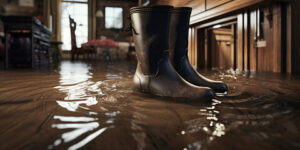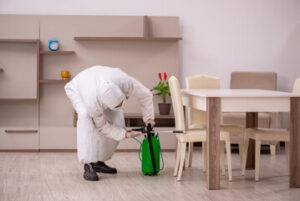Water Restoration is the process of repairing and returning a home or business to its pre-water damage state. This includes comprehensive damage assessment, structural repair and contents restoration.

Left unchecked, water damage can lead to mold growth, musty odors, stains, and serious structural issues. To avoid these problems, it’s essential to hire an IICRC-certified water damage restoration professional. Contact Water Damage Restoration Salt Lake City for professional help.
Water damage can be caused by natural disasters like floods, or more commonly, everyday incidents such as burst pipes and faulty plumbing systems. Whatever the source, prompt water damage restoration is key to avoiding extensive and costly structural repairs, as well as health risks like mold and mildew.
The first step in the process is a detailed inspection and assessment of the water damage. This will help determine the category of the damage, which in turn will inform subsequent steps in the process. For example, white water damage typically involves non-contaminated sources such as a dishwasher or washing machine, while gray and black water damage is more hazardous, often resulting from sewage or flood waters from a natural disaster.
After assessing the damage, the next step is to take a detailed inventory of all items affected by the water intrusion. This will help the restoration specialists to understand what can be salvaged and what will need to be replaced. In addition, it will also allow them to calculate an estimate of the costs involved in the restoration process.
After the inventory has been completed, the specialist will then take a closer look at the structure of the affected area. This will include determining the stability of the affected walls and floors, as well as looking for any signs of structural damage like warping or buckling. If necessary, the specialist will also shut off the power to the affected areas in order to prevent any electrical hazards. It is important to note that the safety of all occupants must be a top priority at this stage, and it is recommended that they only enter the affected area when wearing proper personal protective equipment (PPE).
Extraction
Water damage restoration involves more than just cleanup, but also water removal, drying and sanitization of the affected area. A team of water repair specialists will inspect the damage and determine what steps to take next. In the case of a serious storm, flooding or other natural disaster, water remediation is a vital step in protecting property and minimizing long-term damage and cost.
Once the inspection and assessment of the damage is complete, a water restoration specialist will work to find and stop the source of the water. Then, they will begin the water extraction process. The process may involve pumps and vacuums to remove large volumes of water quickly and efficiently. Then, a professional will use fans and commercial-grade dehumidifiers to dry out the area and its contents.
If the water damage is classified as class three or higher, extensive structural drying and sanitization will be required. This could include removing and replacing flooring, drywall, paneling, shelving, and cabinets. This is an important step in preventing mold and mildew growth, which can be very costly to remediate and remove from the home or business.
Another key aspect of water restoration is repairing ceilings. Whether the cause is due to a roof leak, plumbing issues or an overflowing appliance, repairing a damaged ceiling requires replacing drywall and other materials. It’s also important to address any underlying issues that could lead to future problems. For example, a roof leak that goes untreated can create rot and even affect the structural integrity of the building. In some cases, this can lead to the collapse of walls, floors, and ceilings. This is a major problem and one that can be prevented with prompt action and the right expertise.
Drying
Once all water has been removed, the next step is to dry the affected area and materials. This process typically involves industrial grade dehumidifiers and air movers. A restoration technician may also use specialized equipment such as thermal imaging cameras and moisture meters to monitor the progress of drying. The resulting data is used to adjust temperature, humidity and airflow as needed to reach targeted drying goals.
It is important to act quickly when dealing with water damage. As time passes, the affected materials will continue to absorb moisture, which can lead to structural damage and odor issues. In addition, the longer an area is wet, the higher the risk of mold and mildew growth.
Depending on the severity of the water damage, some materials may need to be removed for proper restoration. This can include soggy drywall down to the studs, carpet padding and even insulation. These materials will need to be disposed of properly to ensure that the space is clean and safe for further work.
If the water damage is minor, the homeowner may choose to remove these items themselves before the restoration company arrives. However, this is normally not recommended as it will only prolong the drying process and may result in additional odors and stains. For this reason, it is best to leave this type of work to a professional. During the drying process, it is recommended that homeowners open windows and doors as much as possible to allow fresh air to circulate and speed up the drying process. If weather permits, using fans is also a good way to help the process along. Providing adequate ventilation will also help to reduce moisture levels, which can prevent the formation of mildew and mold.
Cleaning
Water damage restoration involves a series of steps that work together to repair the damage and protect occupants from health risks. These include water removal, drying and sanitizing. Water removal is the first step in restoration and is essential for preventing further damage to property and furnishings. It also ensures that all areas are dry before moving on to the next phase of the process.
Water restoration professionals use pumps, extractors and vacuum systems to remove all visible water from the affected area. They may also use dehumidifiers and commercial-grade fans to encourage evaporation and speed up the process. The equipment used for this stage depends on the extent of the damage and the type of building materials. For example, if there is significant class three water damage, which affects high-porosity materials, the specialists will use a large fan and special dehumidifiers.
The cleanup process for water damage includes sanitizing all affected surfaces and removing any unsalvageable items. It may also involve using disinfectants, antimicrobial treatments and deodorizing agents to eliminate any mold or bacteria that may be present. In addition, professional technicians will use air scrubbers to remove contaminants and improve indoor air quality during the water restoration process.
Since the restoration process can take several days, displaced homeowners should arrange for alternative accommodation while the water removal and drying process takes place. If this is not possible, they should move valuables to a safe location and avoid touching or walking on wet floors or carpets. In some cases, the water damage can be severe enough to require drywall or flooring replacement. In these situations, it is important to consult with a qualified water restoration company to make sure the process is carried out properly and quickly.
Repairs
Water damage restoration includes repairing and restoring your property to its pre-loss condition. This could involve minor repairs, such as replacing drywall or carpeting, or major construction like tearing down and rebuilding walls, floors and other structures. Repairs can also include restoring furniture, cleaning and disinfecting affected areas and items, removing odors, and applying antimicrobial treatments to prevent mold growth.
The first step in the restoration process is mitigation, which involves reducing and stopping further water damage. This is especially important after events such as floods, burst pipes, or roof leaks. Mitigation steps can include removing excess water, placing protective barriers around affected areas, and boarding up doors and windows. It’s also a good idea to contact your insurance provider early on so they can help you work out any issues that may arise from the incident.
Once the water is removed, the drying process can begin. This is typically done with industrial-grade dehumidifiers and air movers. The airflow and humidity levels in the impacted area are regularly monitored, with any necessary adjustments being made to ensure that your property is properly dried. The longer your property is left untreated, the greater the risk of mold and mildew development, which can have serious health consequences.
Once your property is completely dry, the restoration team can start to make any necessary repairs. This is usually the longest part of the restoration process, and it can involve replacing drywall, carpeting or other materials, repairing furniture, cleaning and disinfecting affected areas, sanitizing items, and removing and replacing contaminated insulation and vapor barrier. It’s also a good idea at this point to take any remaining personal belongings and move them to a safe location.

